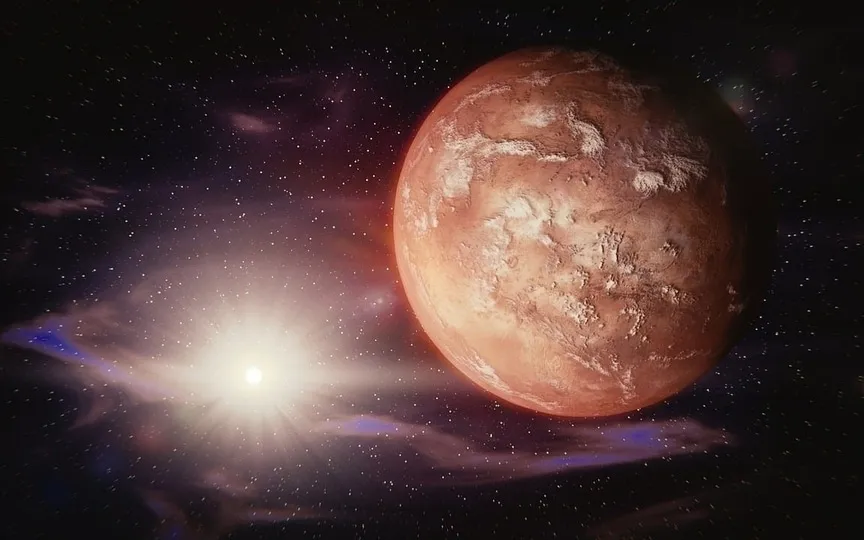NASA model reveals CME’s potential to trigger solar storm on Mars and degrade its atmosphere; Get more information
Not only is the Sun’s continuous solar activity impacting Earth, but it is also affecting neighboring planets. In October, Venus experienced the effects of a powerful coronal mass ejection (CME) cloud, causing electromagnetic fluctuations that led to the erosion of its atmosphere, which escaped into space. Now, according to NASA’s model, a complete halo CME is projected to strike Mars on December 11, resulting in a solar storm. This event is anticipated to have a similar impact on the red planet, causing a minor loss of its atmosphere. Intriguingly, the CME may also generate an aurora display on Mars.
According to a SpaceWeather.com report, “Earlier today, a full halo CME left the Sun. Analysts believe it will miss Earth. Instead, it is headed for Mars. NASA models suggest a direct hit on December 11th. The impact will likely generate ultraviolet auroras and corrode a small portion of the Red Planet from the atmosphere.
A solar storm hits Mars, corrodes its atmosphere
Earth has been lucky this time. The CME in question is a full-halo CME, which is considered the strongest of its kind and contains enormous amounts of electromagnetic energy. If it had hit Earth, we might have seen a moderate to strong solar storm, much stronger than anything we’ve seen in 2023.
But this will also allow space weather scientists to observe the impact of a powerful solar storm and its effect on Mars. According to the report, ultraviolet auroras are possible on Mars, and NASA vehicles such as Ingenuity and the Mars rover will monitor the event and collect data to see how it affects a planet with a much thinner atmosphere than ours.
That doesn’t mean Earth is safe this week. Yesterday, NASA models highlighted the possibility of a small solar storm event tomorrow, December 9, as a result of a CME released from the Sun’s sigmoid flare. It can cause auroras at higher latitudes and can affect shortwave radio propagation in geopotential regions.
The role of the NASA Solar Dynamics Observatory
The NASA Solar Dynamics Observatory (SDO) houses a full suite of instruments for observing the Sun, and has done so since 2010. It uses three very important instruments to collect data on various solar activities. They include the Helioseismic and Magnetic Imager (HMI), which measures high-resolution longitudinal and vector magnetic fields across the entire visible solar disk, the Extreme Ultraviolet Variability Experiment (EVE), which measures the Sun’s extreme ultraviolet radiation, and the Atmospheric Imaging Assembly (AIA), which provides continuous disk-wide observations of the Sun of the chromosphere and corona in seven extreme ultraviolet (EUV) channels.




